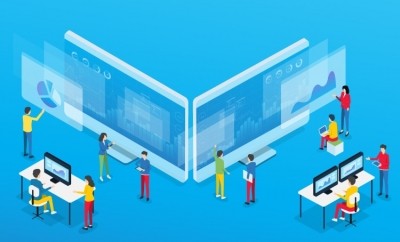Guest article
Embrace digital transformation to survive ‘the new normal’

COVID-19 has caused mass disruption for businesses across all industries, including the bakery and snacks sectors.
The past few months have been about survival, but now food and beverage businesses find themselves facing the next challenge: The new normal.
This could mean anything from enabling remote workforces, adapting to changing customer behaviours or even reviewing and changing entire business models. More than ever, the answers lie in digital transformation.
Many businesses are still reeling from the impact of the pandemic, but for food manufacturers the impact has been particularly severe. The virus has disrupted manufacturing operations on a massive scale, stripping demand for some products while creating unprecedented spikes for others. This has left manufacturers dealing with ever changing production volumes, an under-pressure supply chain and fluctuating workforce demands.
The pandemic has exposed serious vulnerabilities in traditional manufacturing environments. Those who have suffered the most have been the businesses whose operational models have not allowed them to be agile in their response.
Digital transformation was already the route to cutting costs, identifying efficiencies and boosting productivity, but in a post-COVID world, it might be the only way to survive.
Return:
Returning to operational normality is vital, but the new normal means that many businesses cannot simply return to operating as they did before. However, there are digital planning and communication tools that can expedite that return and future proof the business against any further disruption.
Digital Twins has long been heralded as one of the most effective ways of unlocking the value in manufacturing, but in a post pandemic environment, this option has never been wider or more important.
Manufacturers could create a digital twin or replica of their production environment to support process and people flow planning. This would aid the creation of a socially distanced production environment and allow businesses to map out and test any changes to how a workforce could enter or exit a space.
In addition, the creation of this virtual factory would allow manufacturers to test different scenarios, including the introduction of new machinery, without risking real-time interruption to production.
There is often an assumption that a lack of access to 3D or CAD models of a production facility puts the digital twin beyond reach, but that is not the case. A number of key technologies can be utilised to create the digital twin, including Light Detection and Ranging (LIDAR) scanning, a remote sensing technology and surveying method that uses laser scanners to measure distances and dimensions of landscapes and buildings. This data can then be converted to create a digital twin, supported by techniques such as discrete event simulation and visualisation.
Restart:
Many employers would have previously claimed that having a partial or full remote workforce would be ‘unworkable’. But, as we were urged to social distance and flatten the curve, we witnessed what one CEO described as ‘a historic deployment of remote work and digital access to services across every domain.’
For manufacturers, technologies exist that allow remote access to plant data from mobile devices as well as enabling the use of data to predict maintenance requirements and even perform remote diagnostics.
As many businesses have found themselves switching to the production of new products or having to rapidly embrace new tools or technologies, digital tools can also be used to support virtual training and upskilling.
Repurpose:
The pandemic has necessitated a change in direction to survive.
For some, the change required has been obvious and they have been able to capitalise on fast growing new markets using existing supply chains.
Others may find themselves unsure of what direction to head toward, but digital technologies can also help provide a way forward.
Digital expertise and toolsets can enable data acquisition across social media and other external forces to inform businesses about new market opportunities, enable access to new supply chains and allow that all-important monitoring of new trends to support diversification.
The businesses to survive the new normal will be those that embrace digital transformation. COVID-19 has certainly accelerated the need to embrace digital technologies, but businesses should still ensure they analyse all functions within their business, taking into account the data and digital skills and tools they already have. A SWOT analysis of business functions will establish where a digital approach, rather than a doing what we currently do digitally, could deliver results.
The benefits of a holistic, well executed and dynamic digital strategy – which is not fixed in traditional static planning cycles – should reap immediate results and future proof the business against further disruption.
And, crucially, digital transformation is not the preserve of big firms. SMEs are generally agile in nature and this characteristic can enable them to adopt new digital tools and techniques faster than larger organisations.
A growing number of SMEs have seen the benefit of incorporating smart technologies to generate valuable real-time data and are using this information to help them make better decisions to grow their business.
University-based digital impact centres offer a wealth of expertise, unbiased advice and practical support to businesses, especially those hit by the pandemic.
The Virtual Engineering Centre (VEC) of the University of Liverpool recently launched the LCR4 START initiative, offering targeted digital strategy support to Liverpool City Region SMEs to better understand and plan where and how to deploy digital technologies to achieve business gains, growth and savings.














